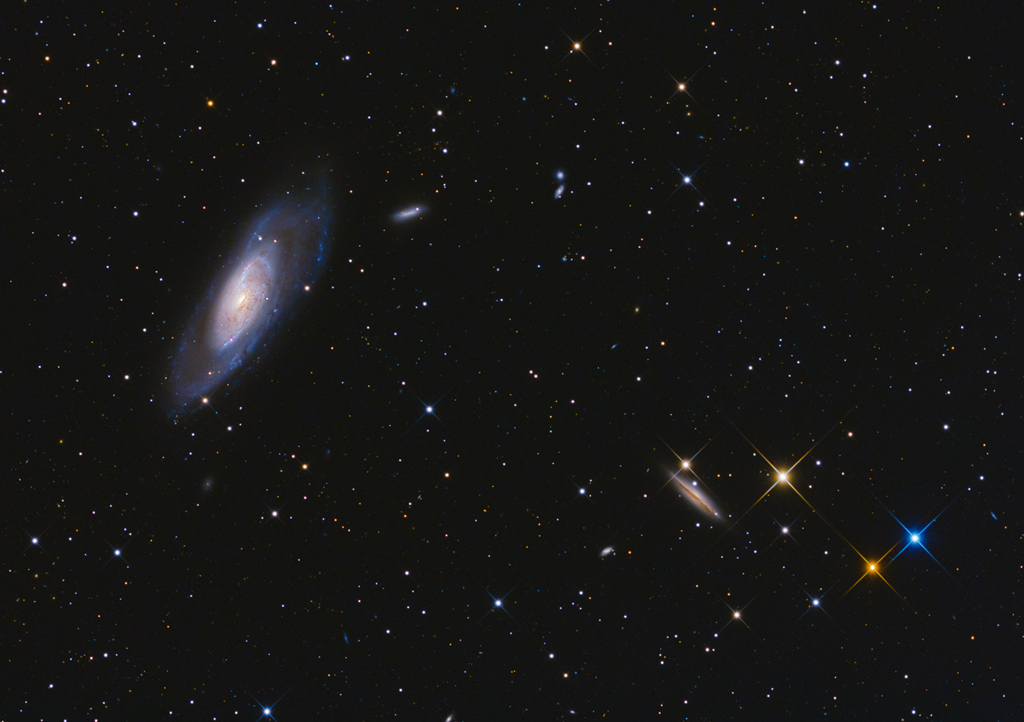M106方向的景观
2020 May 1
A View Toward M106
Image Credit & Copyright: Joonhwa Lee
Explanation: Big, bright, beautiful spiral, Messier 106 dominates this cosmic vista. The nearly two degree wide telescopic field of view looks toward the well-trained constellation Canes Venatici, near the handle of the Big Dipper. Also known as NGC 4258, M106 is about 80,000 light-years across and 23.5 million light-years away, the largest member of the Canes II galaxy group. For a far far away galaxy, the distance to M106 is well-known in part because it can be directly measured by tracking this galaxy’s remarkable maser, or microwave laser emission. Very rare but naturally occurring, the maser emission is produced by water molecules in molecular clouds orbiting its active galactic nucleus. Another prominent spiral galaxy on the scene, viewed nearly edge-on, is NGC 4217 below and right of M106. The distance to NGC 4217 is much less well-known, estimated to be about 60 million light-years, but the bright spiky stars are in the foreground, well inside our own Milky Way galaxy. Even the existence of galaxies beyond the Milky Way was questioned 100 years ago in astronomy’s Great Debate.
Experts Debate: How will humanity first discover extraterrestrial life?
Tomorrow’s picture: light-weekend
M106方向的景观
影像提供与版权: Joonhwa Lee
说明: 在这片宇宙视野里,最吸睛的天体是庞大美丽明亮的螺旋星系M106。这片跨幅将近2度的望远镜视野,眺望北斗七星斗柄附近的猎犬座。亦名为NGC 4258的M106,大小约为80,000光年,距离则约有2千350万光年远,是猎犬座II星系群最大的成员星系。以一个遥远的星系来说,M106的距离很精准,部分的原因是源自追踪与直接测量这个星系内的微波激射。这种罕见而且自然发生的微波激光辐射,是由旋绕活跃星系核的分子云内之水分子所发出的。视野中另一个很醒目的螺旋星系,是M106右下方几乎侧向的NGC 4217。NGC 4217距离量测的精确度低很多,大约在6千万光年左右。此外,带着星芒的明亮天体,则是位在我们的银河系之内的前景恒星。近在100年前,就连银河系的外头是否有星系,都还是天文大辩论的题材。
Experts Debate: How will humanity first discover extraterrestrial life?
明日的图片: light-weekend

